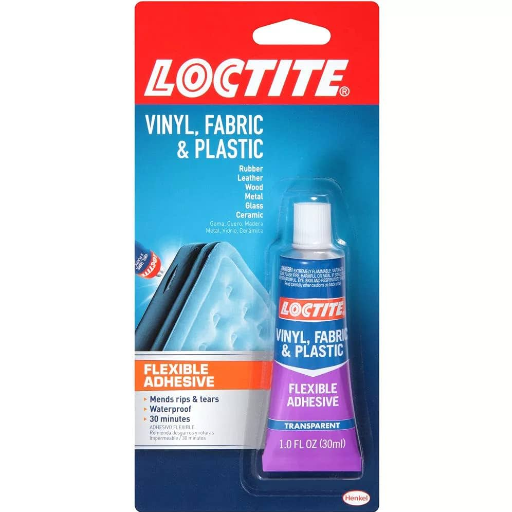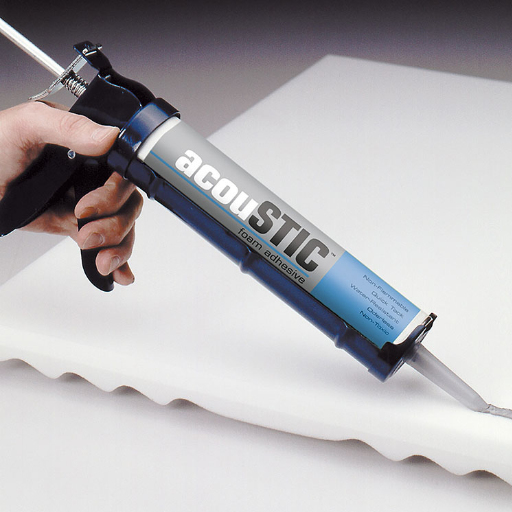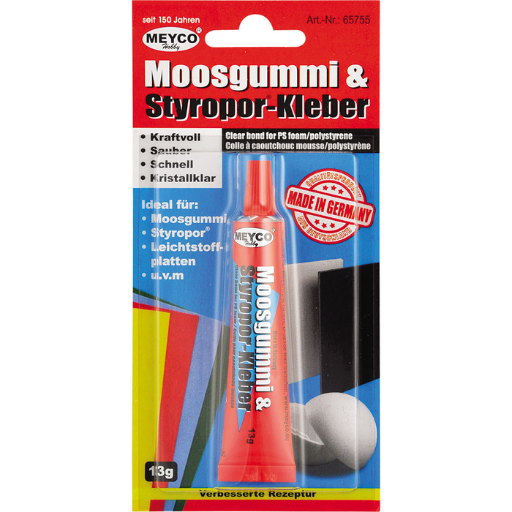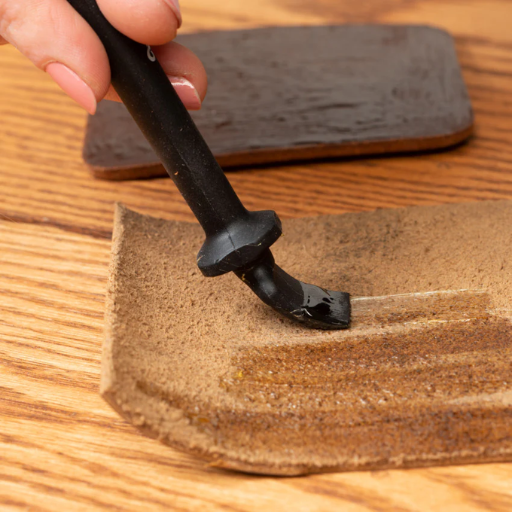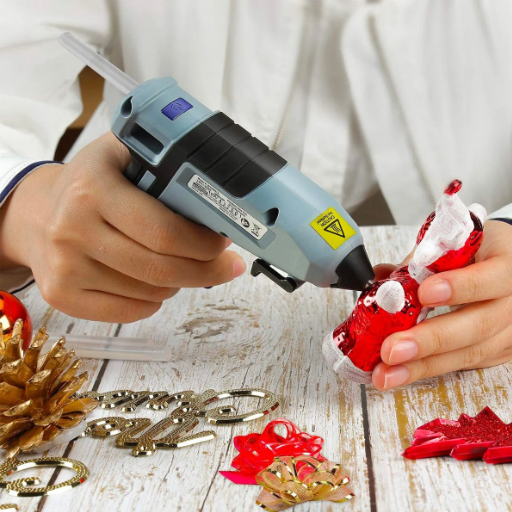When it comes to construction, repairs, or DIY projects, choosing the right adhesive for concrete is a critical step. Whether you’re bonding concrete to other materials or repairing cracks and structural issues, selecting a reliable adhesive can determine the durability and strength of your project. This guide is designed to provide a detailed analysis of the various types of concrete adhesives available on the market, their specific applications, and key factors to consider when making your choice. We will also explore practical tips, product recommendations, and application techniques to ensure your project achieves optimal results. By the end of this post, you’ll have a thorough understanding of how to select and use concrete adhesives effectively, tailored to your specific needs.
What is the Best Concrete Adhesive for Heavy Duty Applications?

In choosing an adhesive for concrete for heavy-duty work, one should look for high-strength and durable products. Because of their superior bonding, resistance to extreme temperatures, and ability to bear excessive loads, epoxy-based adhesives are often the best choice. In outdoor or industrial settings, two-part epoxy adhesives like Loctite Epoxy Metal/Concrete or Gorilla Epoxy are recommended because they work well under stress and environmental exposure. Always take into account the specific project requirements such as maximum load, material compatibility, and curing time to get the best results.
Understanding Adhesive Strength and Durability
The term adhesive strength is referred to an adhesive’s ability to hold two surfaces under stress, which in most cases is expressed in PSI (pounds per square inches). When dealing with heavy duty applications like concrete, adhesive strength is of utmost importance for the bond to support mechanical loads, impacts, or vibrations. Epoxy resins are widely recognized due to their tensile and compressive strength which often exceed 3,000 PSI. This makes them perfect for strenuous tasks.
Durability also includes an adhesive’s ability to perform without losing its structural integrity under varying environmental conditions ranging from extreme temperatures to moisture and chemical exposure. Epoxy adhesives are some of the most valued because they can withstand ultraviolet rays and water, as well as endure changing weather, ensuring strong bonds in indoor, outdoor, and industry settings. Porous surfaces like concrete must be cleaned and roughened before the application of the adhesive to maximize both strength and durability. In addition, proper surface preparation aids in achieving optimal results. When choosing the right adhesive, it is also necessary to think about the curing time because some types of epoxies are not supposed to be stressed for hours or days. All of these considerations are what allow you to choose the right bond for your endeavor.
Top Products Used in Construction
- Sika AnchorFix®-3001
Sika AnchorFix®-3001 is a high-performance, epoxy-based adhesive extensively used for anchoring threaded rods, reinforcing bars, and other structural elements into concrete and masonry. Known for its rapid curing time, high load-bearing capacity, and adaptability under extreme conditions, it is highly effective in infrastructure projects and heavy-duty applications. Its chemical resistance and durability make it suitable for use in wet or dry environments, delivering reliable performance even in demanding settings.
- Loctite® PL Premium Polyurethane Construction Adhesive
Loctite PL Premium is a versatile, moisture-curing adhesive that boasts strong bond strength for various materials such as concrete, wood, metal, and stone. It is 100% polyurethane and solvent-free, offering eco-friendly bonding solutions. Its superior flexibility also allows it to handle joint movement and vibrations effectively. Additionally, it is waterproof, making it ideal for outdoor constructions or projects exposed to harsh weather conditions.
- Gorilla Heavy Duty Construction Adhesive Ultimate
Gorilla Heavy Duty Construction Adhesive Ultimate delivers strength and convenience with its easy application and exceptional bonding power. This product adheres well to a wide range of substrates, including concrete, drywall, and foam board, without the need for additional clamping in most cases. Highly water-resistant and compliant with various environmental conditions, it serves as a robust solution for both professional and DIY construction needs. It is especially noted for its ability to cure quickly while retaining impressive durability.
These adhesives have been vetted for their compatibility with modern construction demands, balancing ease of use, powerful adhesion, and long-term durability. The selection of these products ensures optimal results tailored to a project’s unique specifications.
Why Choose High Strength Adhesive?
From fixing and crafting models to industrial uses, there are many types of adhesives used in different applications. One product that stands out is high-strength adhesives. The high-strength adhesives give unparalleled bonding capabilities, ensuring structural integrity even under extreme stress or environmental conditions. They can stick with a range of materials such as metal, wood, plastic, and even concrete which is why they are popular in diverse industries. These adhesives are resistant to water, heat, and chemicals so they are lastingly durable for indoor and outdoor applications. Furthermore, they cut down on assembly steps by eliminating the need for mechanical fasteners which reduces cost and enhances the design and structural integrity of the projects. Choosing a high-strength adhesive means investing in efficiency and superior performance tailored to the demanding construction and manufacturing requirements.
How Does Epoxy Adhesive Work for Concrete Bonding?

Epoxy adhesives can bond concrete due to a chemical reaction that happens when a resin is combined with a hardener. When applied to concrete, the adhesive can penetrate the porous surface and create a mechanical interlocking bond. The adhesive is also stress, moisture, and chemically resistant, making it ideally suited for crack repairs, structural bonding, and component anchorage for construction and industrial applications. In addition, epoxy adhesive sets to a stiff bond which greatly enhances the long-term performance of the bond in harsh environments.
Benefits of Using Concrete Epoxy Adhesives
- High Bond Strength: Epoxy adhesives provide exceptional adhesion strength, effectively bonding concrete to itself or other materials like steel, wood, and composites. This makes them suitable for structural applications where reliability is crucial.
- Durability and Longevity: These adhesives are highly resistant to wear, weathering, and chemical exposure, ensuring long-lasting performance even in harsh conditions such as industrial environments or extreme climates.
- Moisture and Chemical Resistance: Epoxy adhesives create a barrier that withstands moisture penetration and exposure to a variety of chemicals, making them ideal for repairs, restorations, and protective coatings in chemically aggressive environments.
- Versatility: From filling cracks and gaps to securing heavy components, concrete epoxy adhesives can accommodate a wide range of applications, including slab repairs, grout replacement, and structural reinforcement.
- Fast Setting and Load-Bearing Capacity: Many formulations offer rapid curing times, allowing for shorter project timelines, while maintaining excellent load-bearing capabilities once cured.
By leveraging these benefits, epoxy adhesives for concrete deliver advanced solutions tailored to the rigorous demands of modern construction and repair projects.
Step-by-Step Guide to Apply Wall Stones with Epoxy
- Prepare the Surface
Begin by cleaning the wall surface thoroughly to remove dust, dirt, grease, or loose material. Use a brush, damp cloth, or power washer depending on the wall type. Ensure the surface is dry, as moisture can compromise adhesion.
- Measure and Plan the Layout
Arrange the wall stones on a flat surface to create the desired pattern. Mark guidelines on the wall to ensure even alignment during installation.
- Mix the Epoxy Adhesive
Follow the manufacturer’s instructions to mix the epoxy adhesive components (resin and hardener) in the recommended ratio. Mix thoroughly to achieve a uniform consistency, and only prepare the amount you can use within the adhesive’s working time.
- Apply the Epoxy Adhesive
Using a trowel, apply a thin, even layer of epoxy onto the back of the wall stone and the corresponding area on the wall. For heavier stones, apply a slightly thicker adhesive layer to ensure a strong bond.
- Place the Wall Stone
Press the stone firmly against the wall, starting from the bottom and working upwards to prevent slippage. Hold it in place for a few seconds to ensure proper adhesion. Use spacers if uniform gaps between stones are desired.
- Adjust and Secure
Before the adhesive sets, make any necessary adjustments to the position of the stones. For large or heavy stones, additional bracing or temporary supports may be required to keep them in place during curing.
- Clean Excess Adhesive
Wipe away any excess epoxy adhesive immediately with a damp cloth or solvent, as cured epoxy is difficult to remove.
- Allow Proper Curing Time
Refer to the epoxy adhesive’s curing guidelines for optimal results. Avoid disturbing the stones while curing to ensure a secure and long-lasting bond.
- Finish the Gaps (Optional)
Once the epoxy has fully cured, fill any gaps between stones with grout or additional adhesive for a polished look.
By following these steps, you’ll achieve a durable, professional-quality installation of wall stones that can withstand various stresses and environmental conditions.
What Are the Different Types of Adhesives for Concrete?

Concrete adhesives can be broadly categorized into several types based on their composition and intended use. Here are the primary types:
- Epoxy-Based Adhesives
These are highly durable and offer excellent bonding strength, making them suitable for structural applications. They resist chemicals, water, and temperature variations, but require precise mixing and application.
- Polyurethane Adhesives
Known for their flexibility, polyurethane adhesives are ideal for use in environments subject to movement or vibration. They also provide good weather resistance.
- Acrylic Adhesives
Acrylic formulations are versatile, with fast curing times and good adhesion to a variety of surfaces. They work well for smaller or lightweight projects.
- Cementitious Adhesives
These adhesives are cement-based and typically used for tile installation or masonry work. They blend well with concrete surfaces and offer decent durability.
- Silicone-Based Adhesives
Silicone adhesives are best suited for non-structural applications, providing moisture and weather resistance. They are often used as a sealant rather than a primary adhesive.
Each type of adhesive has specific advantages and limitations, so selecting the right adhesive depends on the application’s requirements, including load, environmental exposure, and curing conditions.
Overview of Two-Part Epoxy Adhesive
The adhesive bonding technology differences between plastic and metal aid in producing better hybrid materials. Plastic hybrid containing metal on /within it feature either a depression or a protruding area to enhance adhesion. For softer materials and surface treatments, depressions are better, while protrusions are appropriate for harder materials. Hybrid materials may be shaped through casting, plastic deformation, or after substance pre-treatment through exposure to a laser.
Hybrid materials are ideal where lightweight and high mechanical properties are needed. Special blends of micro or nanoparticles in polymers can allow for achieving higher strength. There are Hybrid materials consisting of a base matrix and a reinforcement which can be in the form of fibers or powders. Simple preparation of the polymers allows for ease of shaping the structure and providing flexibility. The current trend in hybrid materials targets electric conductivity with nanocarbons or nanotubes.
Comparing Glue for Concrete and Other Alternatives
There are multiple factors like cost efficiency, application method, bonding strength, and durability that should be considered when choosing a suitable adhesive alternative for concrete. The strongly made bonds between two concrete surfaces or a concrete surface and any other material are formed with the Electronsticky glue, more commonly known as ‘Concrete adhesive’. The makings of these glues usually include PU, epoxy, and acrylic. Apart from that, these adhesives are made of durable, robust epoxy which makes them resistant to weather, moisture, and chemical exposure.
Flexibility and a flawless surface are unparalleled when compared with mortar or mechanical connectors. It’s true that mortar is widely used, however, when compared with chemical-based glue, it grimly falls short on the adhesive strength spectrum. Mechanical fasteners like bolts or screws compromise the integrity of strength, causing weak points. Dynamic loads make this point of weakness even more sensitive and structural issues more likely to rise.
Industrial epoxies and polyurethane construction adhesives are a couple of key alternatives to concrete glue. Elastic, water resistant, and ideal for outdoor structures, this is the praise of Polyurethane adhesives. Heavy-duty applications favor Epoxies because of their tensile strength and thermal resistance. Surface preparation is key with both alternatives and so are the unsatisfactory curing times or environmental concerns.
Concrete glue is recommended in projects where there is a high need for ease of use and a strong bond. There are modern advancements in adhesive technology which encompass the use of nanomaterials. These help increase strength, durability, and versatility.
How to Bond Concrete to Other Materials?

The process of effectively bonding concrete to other materials involves proper surface preparation and the selection of a suitable adhesive. To start, cleaning the surfaces thoroughly to eliminate all traces of dirt, grease, or other debris is a vital step since contaminants can weaken the bond. If feasible, roughening the surface slightly enhances adhesion aggression. The choice of adhesive depends on the materials involved; for example, polyurethane adhesives are appropriate for outdoor use thanks to their elasticity and water-proof nature, while epoxy resins provide excellent tensile strength for heavy-duty or load-bearing construction. Spread the adhesive using the optimal method specified in the product instructions, and make sure to cure it within the stated optimal environment to create the strongest, most durable bonds possible.
Techniques for Metal-to-Concrete Adhesive Bonding
A strong bond between metal and concrete can be established using adequate techniques and appropriate metal adhesives. It is said that the surface of the metal must first be treated with Scrub as well as soak the surface to remove ‘grease’, oxidation layers, or paint that acts as a contaminant on the surface. The same applies to the concrete surface; it also has to eliminate its impurities, and if needed, it must be roughened for better adhesion. Opt for a formulated high-grade adhesive, such as a two-part epoxy resin, which has impressive tensile strength. Polyurethane Construction grade adhesive is suitable where flexibility and water resistance are needed. The adhesive must be applied in accordance to the respect of the manufacturer’s details, and all portions of both surfaces must be properly bonded. After joining the two portions together, it is vital to clamp or fix them to ensure that the surfaces do not shift or move during the curing phase. Always, without fail make sure that the suggestions made by metal adhesive manufacturers are followed for a correct metal and concrete bond regardless of the conditions.
Using Construction Adhesive for Wood and Concrete
To bond wood and concrete surfaces, construction adhesive must be used correctly, and surface preparation is very important. It is important that both surfaces are clean, dry and free of dust, grease, or other contaminants as these will give unwanted strength to the adhesive bond. For wood, sanding allows removing loose fibers and provides a smoother bonding surface. For concrete, roughening the surface, if needed, provides a better mechanical bond, and techniques such as wire brushing or acid etching can always be used.
Select an adhesive suitable for wood-to-concrete bonding, for example, construction adhesives based on polyurethane. They are flexible, durable, and stable to many environmental conditions. On the other hand, epoxy adhesives are a good alternative for fastening parts together where high tensile strength and rigidity are preferred. The adhesive should be applied evenly across the surfaces with a spreader or a caulking gun, and as a rule of thumb, the spread should adhere to the manufacturer’s required thickness.
After bonding both wood and concrete pieces, it is advisable to use clamps, weights or temporary fasteners to hold the pieces in place during the adhesive curing period. Make sure that all steps in cleanseure and bonding are observed otherwise, umpredicted movements could lead to a bad bond. Always check temperature, humidity conditions, and types of materials for a safe, secure, and unbreakable bond.
What Are the Best Practices for Concrete Repair Using Adhesive?

Like with any other surface, dirt, grease, or fragments need to be removed from the concrete surface before beginning with the repair using adhesive. Be sure that the structure is strong, and the surface is dry before applying the adhesive. Depending on the extent of damage and load the area needs to bear, choose between epoxy-based or polyurethane-based high-performance adhesives. The adhesive also needs to be applied by the instructions provided by the manufacturer. During the curing process, clamps and other securing devices need to be applied to the repair which must be held immobile. During the curing and fixing phase, the area must also be maintained at optimal temperature and humidity levels so that the repaired area welds significantly. Like with any activity, be sure to set adequate safety measures and use the correct protective equipment.
Preparing Concrete Surfaces for Adhesion
As part of the guidelines, before bonding is done on concrete surfaces proper preparation of the surface is needed for effective adhesion. Generally, concrete surfaces should always be cleaned of dirt, oil, grease, dust, and any other loose particles. For tougher residues and less contaminant buildup, pressure washing and abrasive blasting can be used. Also, cracks or any damaging surfaces should be checked to make sure that everything is smoothed out. In addition, the concrete surface should be dried off, because any remaining moisture will hinder strong bonding. Surface preparation is crucial for the effectiveness of the bond, so always remember to check the surface condition for the specified requirements. Moreover, for maximum outcomes, tools like grinders and other mechanical devices can be used to roughen the surface to improve adhesive penetration and bonding.
Ensuring Waterproof Seals in Concrete Repair
The effectiveness of waterproof seals during concrete repair maintenance is highly dependent on the knowledge of materials, techniques, and the surrounding environment. The type of sealant chosen for the job is very important as well; polyurethane, epoxy resins, and silicone are commonly used sealants for their resistance and adhesion to water. Before application, preparation of surfaces is of utmost importance: cleaning the area and getting rid of any oil, debris, or contaminants to ensure proper bonding of the sealant.
Repair maintenance can consist of applying waterproof coatings to fill cracks or seams, and using injection systems to create a seamless barrier. Factors such as humidity, temperature, and moisture should not be overlooked as they can impact the durability of the seal over time. Performing regular inspections and maintenance at high-moisture sites, or in load-bearing surrounds helps to ensure the integrity of the waterproof seal. Adhering to these methods will help achieve an effective and reliable concrete repair, whether structural or non-structural.
Tips to Clean Excess Adhesive After Application
- Act Quickly for the Best Results
Adhesive removal is easier while the material is still wet or recently applied. Using a clean, lint-free cloth dampened with water or an appropriate solvent can help gently wipe away excess adhesive without damaging the surface.
- Identify the Adhesive Type
The cleaning method depends on whether the adhesive is water-based, solvent-based, or epoxy. For water-based adhesives, warm soapy water is typically sufficient. Solvent-based adhesives may require the use of acetone or rubbing alcohol, while epoxies often demand specialized adhesive removers.
- Apply Solvents Carefully
Use solvents, such as acetone or isopropyl alcohol, sparingly and only on surfaces that will not be damaged by chemicals. Test the solvent on a small, inconspicuous area before broad application to ensure compatibility.
- Use Mechanical Methods for Cured Adhesives
If the adhesive has already hardened, mechanical methods like scraping with a plastic scraper or using fine-grit sandpaper can be employed. Be cautious to avoid scratching or damaging the underlying material.
- Follow with Proper Cleaning
Once the adhesive is removed, clean the surface thoroughly with a damp cloth to remove any residue from the solvent or adhesive. Dry the area completely to prevent moisture-related issues.
- Prevent Future Excess Adhesive
To avoid excess adhesive in future applications, use precise tools like dispensers or applicator tips and apply adhesive sparingly to the intended area.
By combining these techniques based on the specific adhesive type and surface material, cleaning excess adhesive becomes a manageable process. Always follow manufacturer guidelines for both the adhesive and any cleaning agents.
References
Frequently Asked Questions (FAQ)
Q: What is the best concrete adhesive for repairing cracks in concrete?
A: The best adhesive for repairing cracks in concrete often depends on the type of crack and the environment. For most repairs, a strong concrete adhesive like epoxy resin or polyurethane construction adhesive is recommended. These adhesives cure to form a robust bond that can withstand environmental stress.
Q: How does epoxy glue compare to other types of adhesive for concrete bonding?
A: Epoxy glue is known for its high bond strength and durability. Unlike other adhesives, epoxy cures to a hard, resilient finish that is ideal for use in high-stress environments. It is often considered the best adhesive for concrete when high-strength bonds are necessary.
Q: Can I use Loctite products for concrete bonding?
A: Yes, Loctite offers several products suitable for concrete bonding, such as Loctite PL Premium Max and Loctite Power Grab Express Heavy Duty. These products provide strong adhesion and are designed for masonry applications.
Q: What should I consider when choosing the right concrete adhesive?
A: When selecting the right concrete adhesive, consider the surface type, environmental conditions, and the specific requirements of the project. Read the manufacturer’s instructions to determine if the adhesive is suitable for your needs.
Q: How do I apply concrete glue effectively?
A: To apply concrete glue effectively, ensure that the surface is clean, dry, and free of dust or debris like sand. Use a syringe or a similar tool to apply the adhesive precisely, and follow the product’s instructions for curing time.
Q: Is there a difference between adhesive glue and adhesive for concrete bonding?
A: Yes, adhesive glue is a general term, while adhesive for concrete bonding refers specifically to products designed to bond concrete surfaces. The latter typically offers higher bond strength and durability for masonry applications.
Q: What is polyurethane construction adhesive, and how is it used?
A: Polyurethane construction adhesive is a type of glue that provides strong bonds in construction projects. It is versatile, can bond a variety of materials, and is commonly used in rebuilding concrete surfaces and other masonry applications.
Q: How does the curing process affect the strength of concrete adhesive?
A: The curing process is crucial for developing the adhesive’s full strength. As the adhesive cures, it forms a stable bond with the concrete. Following the manufacturer’s instructions for curing time ensures the product’s usable strength is achieved.
Q: What demonstration techniques does the glue guy demonstrate for applying concrete adhesive?
A: The glue guy demonstrates techniques such as ensuring a clean surface, using the right amount of adhesive, and applying pressure during the curing process to achieve the best results with concrete adhesive.

















